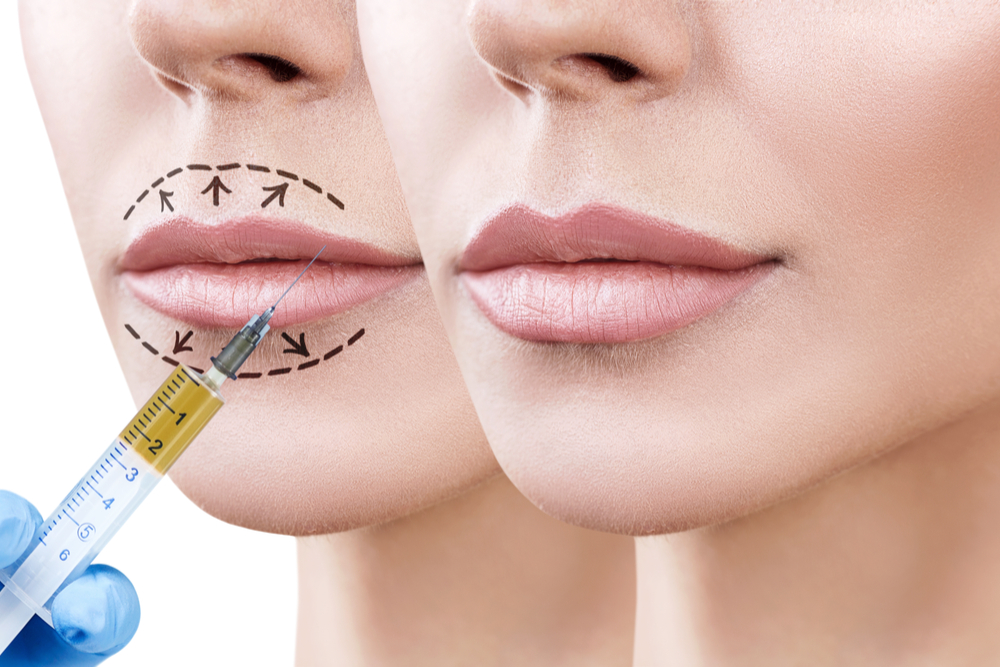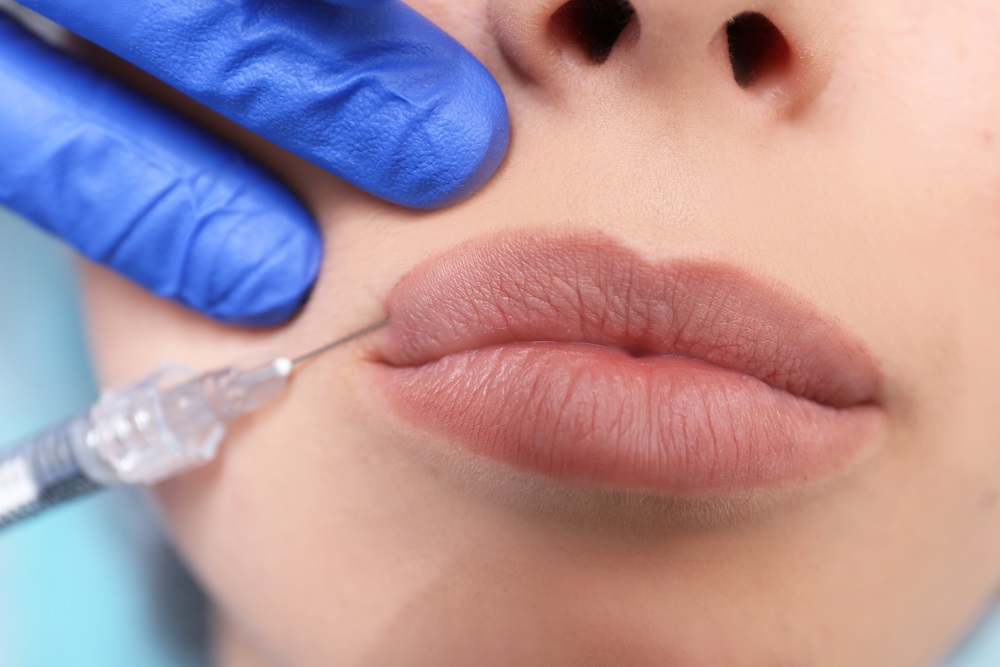The popularity of collagen injections has declined in recent years. Safer, more effective synthetic fillers have become the new standard.
When you look in the mirror, do you wish you could turn back the hands of time and erase the signs of aging without resorting to surgery? If so, you may have heard of a cosmetic procedure known as collagen replacement therapy.
While it’s true that collagen is one of many injectable fillers on the market today, its use is not as common as it once was. In fact, there are several newer, safer options to choose from. We discussed this with Palm Beach facial plastic and reconstructive surgeon Dr. Jean Paul Azzi.
What Is Collagen?
Collagen is found naturally in the body, making up 70% of the protein within our skin. As we age, our body’s natural collagen production gradually decreases, causing the skin to lose its flexibility.
Because one of its key roles is to help the skin maintain its elasticity and suppleness, the benefits of collagen in cosmetic products and treatments have been the subject of several scientific studies over the past few decades.
According to Dr. Azzi, the use of collagen fillers for cosmetic purposes was quite widespread in the 80s, but this is now a thing of the past. Originally, two types of collagen-based fillers were commonly used — bovine collagen (Zyplast and Zyderm), and human collagen (Cosmoplast, Cosmoderm, and Evolence).
While human and bovine collagen injections may still be performed in some parts of the world, to Dr. Azzi’s knowledge no one in his close professional circle still endorses this practice.
Being that Dr. Azzi is a highly experienced and esteemed facial plastic surgeon, if you do come across a practitioner who does collagen replacement therapy, this should immediately raise a red flag.
As you’ll soon discover, there are several reasons to choose a different form of treatment.
The (Outdated) Uses of Collagen Injections
“Before the development of the new fillers we favor today, collagen was widely used to fill folds and creases on the face,” says Dr. Azzi. The practice was so widespread that “modern facial plastic surgery practices sometimes still use the term ‘collagen’ to describe fillers.”
Common concerns that were addressed through the use of collagen injections included the following:
- Folds between the mouth and nose (nasolabial folds)
- Creases from the corners of the mouth (marionette lines)
- Wrinkles and creases around the eyes
- Furrows in the forehead
- Sunken cheeks and temples
- Hollowing under the eyes and in the tear troughs
In fact, Dr. Azzi informs that “collagen was used the same way any modern filler is used today, even for an entire liquid facelift.” This process involved the use of fine needles to inject the product under the skin and plump up those folds and creases, in much the same way as modern synthetic fillers are administered.
However, collagen presents one significant downside: its side effects, which are mainly caused by allergic reactions.
Collagen Injection Side Effects
Back when the practice was still common, patients were required to undergo allergy tests on their forearm, one month prior to their procedure. If patients had an allergic reaction in the ‘test’ area — welts, redness, itching, or swelling — collagen treatment was not recommended.
And even where no allergy was found, collagen injections still commonly produced local reactions such as stinging, throbbing, burning, and mild skin redness.
Other risks include infection, lumpiness, and contour irregularities. There are also several medical conditions or situations that prevent the use of collagen injections, such as:
- Pregnancy and breastfeeding
- Collagen vascular disease
- Autoimmune disease
- Allergies to beef or bovine products
- Allergies to lidocaine
In light of this, it’s not surprising to learn that “collagen injections fell out of favor for the new, safer fillers we use today,” says Dr. Azzi.
Safer Products
The commercialization of hyaluronic acid-based fillers such as Restylane in the early 2000s rapidly decreased the popularity of collagen-based fillers.
Compared to collagen, “new products such as hyaluronic acid and calcium hydroxyapatite are safe and have a very small chance of local reactions,” says Dr. Azzi. “In fact, the new fillers are superior in every way.”
These new products are also more cost effective and longer lasting. “With collagen, you would often need several syringes, and the treatment would need to be repeated every few months,” says Dr. Azzi. “With the newer hyaluronic acid fillers, the number of syringes will depend on the patient and the area being treated. But the biggest difference between the older collagen-based fillers and the newer, more advanced fillers is how long they last. There are some fillers now, such as Radiesse, that I feel last 9 to 24 months in my patients.”
These are some of the most popular injectable treatments on the market today.
Dermal Fillers
“Some of the most popular new fillers available are Juvederm, Voluma, Belotero, Radiesse, Restylane, Perlane, and Sculptra,” says Dr. Azzi.
Dermal fillers are generally used to fill and plump up specific areas of the face:
- Nasolabial folds and marionette lines
- Perioral lines (the small vertical lines that appear above the upper lip)
- Sunken cheeks, eyes, and temples
- Acne scars or indents in the skin
Modern fillers can also be used to make the lips appear fuller, to recontour the jawline, or even reshape the nose. Side effects are rare, and downtime is minimal.
Botox
Botox has now been used for more than 20 years, and is considered a very safe treatment. It’s most effective for the treatment of facial wrinkles such as crow’s feet (the fine lines around the eyes) and frown lines on the forehead and between the eyebrows.
Botox temporarily relaxes facial muscles and prevents them from contracting. This effectively smooths out fine lines and wrinkles, restoring or maintaining a more youthful appearance.
Side effects are minimal, the most common being temporary muscle weakness, redness, irritation, and swelling at the injection site. However, these can be minimized by choosing an experienced injector.
Botox is a temporary treatment that generally needs to be repeated every 3 to 4 months.
Fat Transfer
In recent years fat transfer, also known as fat grafting, has rapidly grown in popularity. During the procedure fat is harvested from donor sites such as the butt, stomach, or thighs, and redistributed to other areas of the body, including the face.
“There are many advantages to fat transfer over using dermal fillers. The most practical use is when someone has a gaunt appearance and needs a lot of volume,” says Dr. Azzi. “When too much volume is required, it can be financially impractical to use prepackaged dermal fillers.”
“Another advantage of fat transfer is that when it’s done properly, a significant percentage of the fat transferred can have a permanent take. It essentially becomes part of the face,” adds Dr. Azzi.
Side effects from fat transfer are also very rare. If your procedure is performed by an expert, the very worse you can expect is some slight swelling and bruising.
Trust Your Face to a Specialist
Dermal fillers, Botox, and fat transfer are considered non-invasive procedures. They are all performed at the doctor’s office, with very little or no downtime. This means that you can go about your normal activities uninterrupted.
While non surgical treatments are suitable for many patients, for older patients with lack of skin tone or substantial skin laxity, cosmetic surgery may be a better choice to achieve optimal results.
One very important piece of final advice from Dr. Azzi: “Always trust your face to a specialist!” The best course of action is to visit an experienced plastic surgeon who will take your medical history into account, assess your areas of concern, and determine the treatment that is most suited to your individual needs and aesthetic goals.









